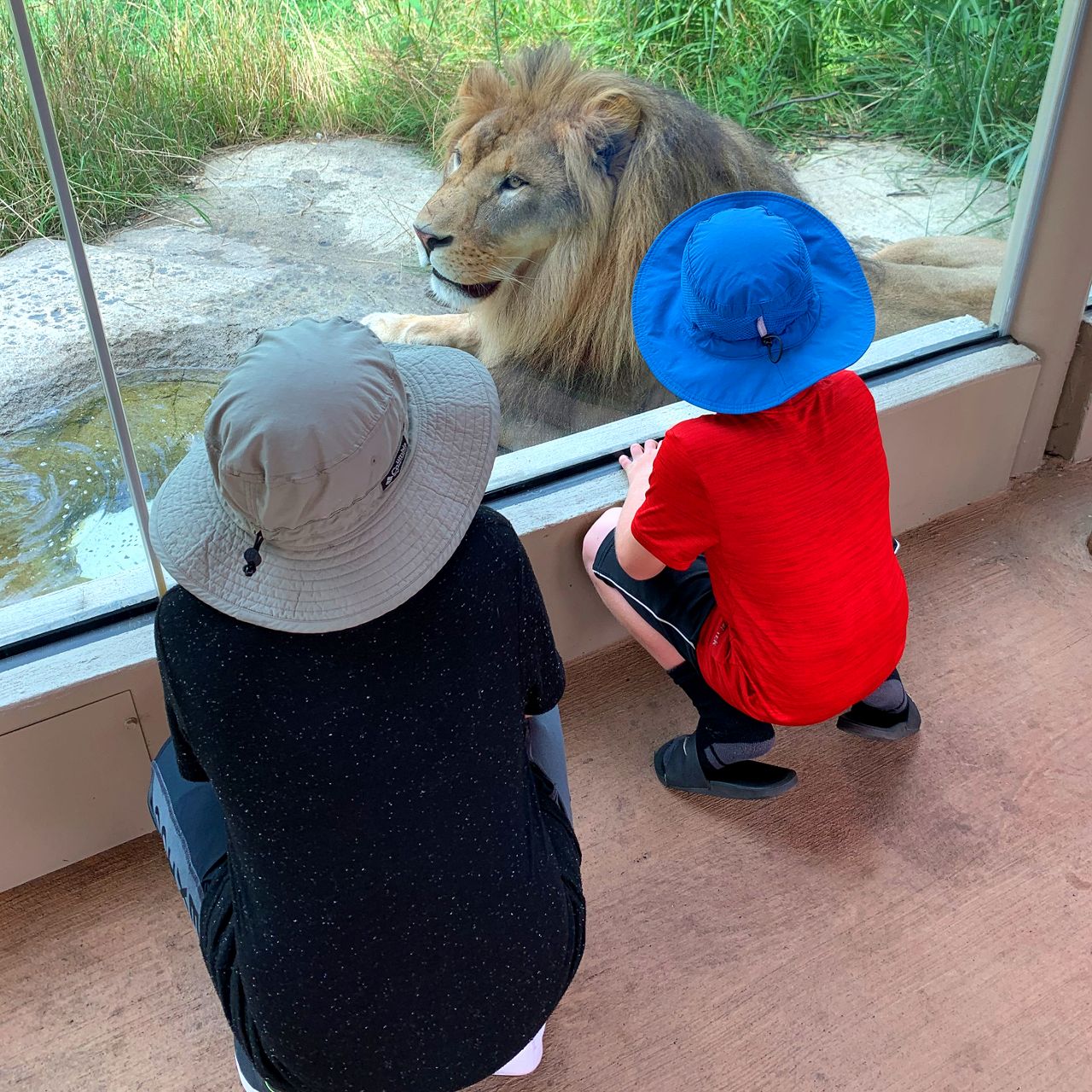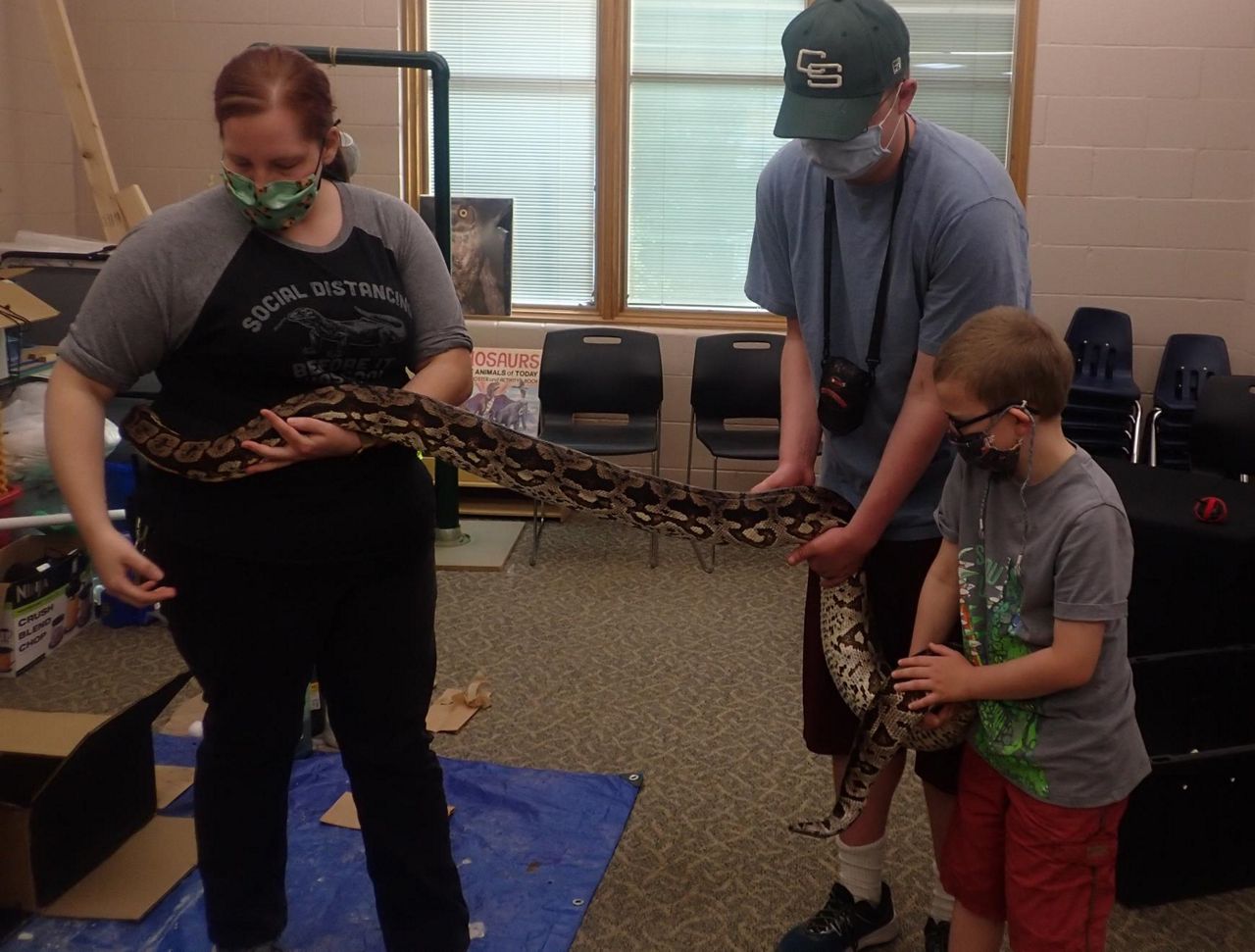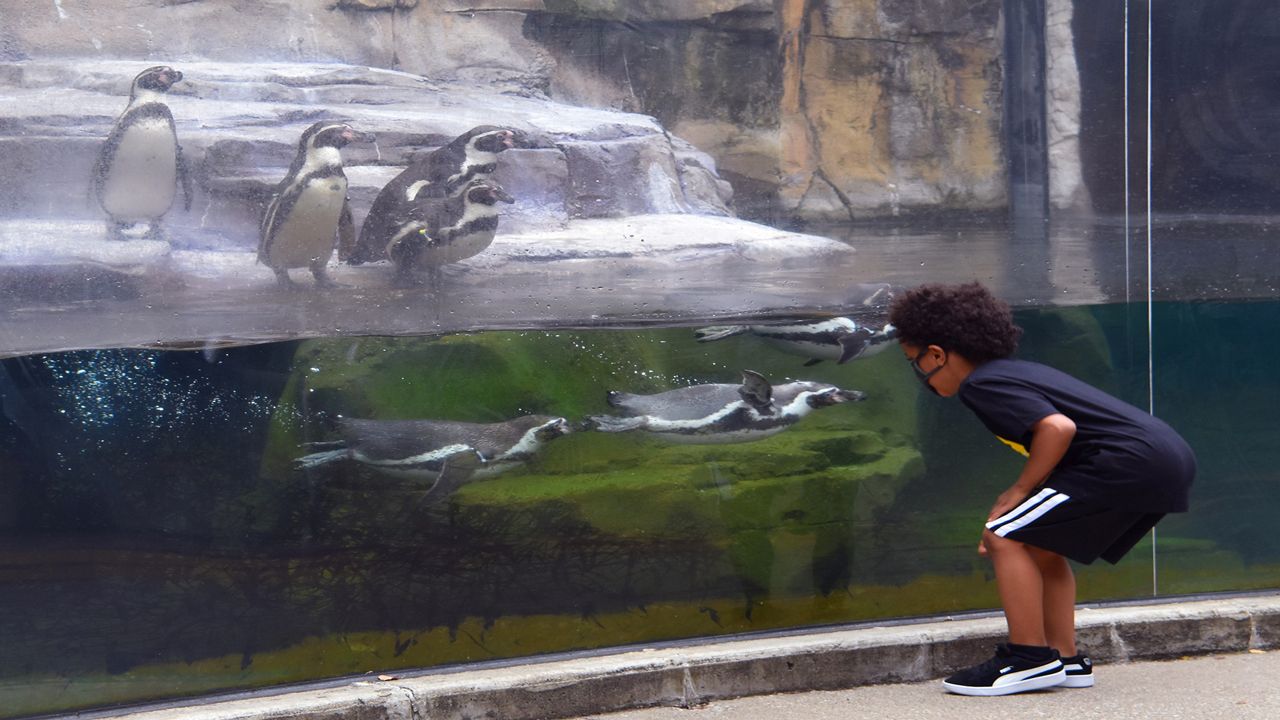AKRON, Ohio — For three months last spring, not a single visitor stepped through the gates of the Akron Zoo. The pandemic forced closure of the zoo and other public facilities on March 17, cutting off the zoo’s earned revenue stream.
Despite that, more than 1,000 animals still needed food and care.
“Being closed is something none of us ever thought we would see,” said Akron Zoo CEO Doug Piekarz. “I've been in this profession for 33 years, and I've never seen a situation like this with the depth and breadth of negative impact as this has had.”
Had it not been for revenue from the zoo’s last levy in 2013, the facility would have been in trouble, Pierkarz said.
“I honestly don't know what we would have done because that public support allowed us to continue to care for the animals, to continue to support our staff, despite the fact that our earned revenue dropped to zero for those three months,” he said. “You know, when you have 1,000 animals that range from lions to bears to flamingos and everything in between, that care, that welfare has to be a top consideration at all times
The zoo’s cycle puts the next levy on ballots this November.
“We're on the ballot in the midst of a pandemic because it's our cycle,” he said. “It is our time and we risk losing half of the funding of the zoo, if that levy was not on the ballot at the right time.”

When the zoo reopened on June 17, it was at only 25 percent capacity. But the zoo is an important quality-of-life amenity for the community, he said. And because it is an outdoor venue and the number of guests is controlled, it is safe to visit.
“So the exposure risk is very small and that's something that we take solace in even though we're capped at 25 percent of our capacity,” he said. “This is the safest possible place for people to get a feeling of normalcy again, to do something that you might have done before the pandemic hit, and to really build those inspirational memories and positive thoughts with your family, your friends, your children.”
However, indoor classrooms remained closed, which meant the zoo’s popular summer camp for kids was a no-go.
“During that time, we really challenged ourselves to figure out how we could continue to be the solid, good corporate citizen that we have always worked to be, and also to be a great community asset, even though our doors were closed,” he said.
Starting on day one of the closure, zoo employees put their heads together to figure out how to do that. They decided to move all of the zoo’s science and STEM-based educational programing online and offer it free.
The programs the staff came up with worked.
The zoo engaged 3.4 million people in the three months it was closed, Piekatz said, which equated to a 1,600 percent increase in visitors.
Upon closure, the zoo staff moved quickly, said Elena Bell, the marketing and PR manager.
“We said, 'OK, what's the first thing we can do and start today?’” she said.
About an hour after the doors closed, the staff went live via Facebook, showing animals and interacting with visitors. The live events morphed into “Lunch & Learns,” hosted daily.
“So we did those every single day that we were closed, and we made adjustments along the way,” Bell said. The team began drawing visitors from across the United States, who asked questions and got answers in real time.
To earn revenue, the staff developed special programs that could be offered via ZOOM, making adjustments based on what worked best along the way, Bell said.
“We really wanted to stay connected to the public, and keep them connected with our animals,” she said.
The next challenge was taking the zoo’s popular summer Zoo Camp into the virtual world. The camp has been offered for about 20 years and always sells out, Piekarz said.
This year, the zoo’s educational team organized the camp into three monthly installments, which was delivered through the mail in boxes addressed to the children. Each box was filled with supplies, color-coded and organized by week down to each day, with a coordinating calendar.
“The parents could see every day what we were asking their child to do,” said Zoo Camp Coordinator Sarah Restivo. “It was maybe go out and go on a hike and find a pine cone and then turn it into an owl. So we sent them the felt pieces to turn that pine cone into a snowy owl. But we were doing things so that we got them moving and thinking and going outside.”
Katharine O’Connell, who lives in Cleveland, enrolled her 9-year-old son, Rory, in Zoo Camp.

“They had every single day planned out,” she said. “They had a workbook that had what they were going to do. And they had little packets and envelopes of everything that you did each day. It was so beautifully organized from the very beginning. It was exciting. And it was also impressive to see.”
Zoo camp also featured live streams through a special Facebook page, where kids interacted in real time with the instructors. Camp activities were also recorded so participants could watch later if they missed anything—flexibility O’Connell said she appreciated.
“We hadn't seen anything work for a long time, you know, like the grocery stores, and everything was messed up at the schools,” she said. “And here was this beautifully, perfectly done thing.”
One activity asked kids to use crepe paper to create a maze at home to understand the snow leopard’s agility. More than 60 families posted videos of kids moving through the maze, as well as family dogs and toddlers, Restivo said.
“They taught us a lot of things we didn't know about. Like it's amazing how much you can learn,” Rory said. “And they really put in time for this program to make us happy. But that shows that they really care about us as well as the animals.”
Zoo camp included virtual field trips and activities kids could do around their neighborhood, many of which focused on the environment and conservation.
“I really care about the environment and I really want to slow down climate change,” Rory said. “I like animals a lot. A lot of people don't notice they're just as important as humans, like, some of them have great adaptations to survive.”
Rory said he enjoyed all the animals, especially the otters.
“I'm surprised how well they care for the animals,” he said. “They had all those specific needs. Not one of them looked like they weren't happy.”
When the zoo opened, the family visited the zoo. Rory got to hold a boa constrictor and meet Restivo and zoo camp staff in person. He even wrote the staff a letter, telling them how much he enjoyed zoo camp.
“The zoo staff was there and met him, and showed him some of the animals that he had met and it just made his whole summer,” O’Connell said. “Really it’s the most special thing; they just are really incredible.”




